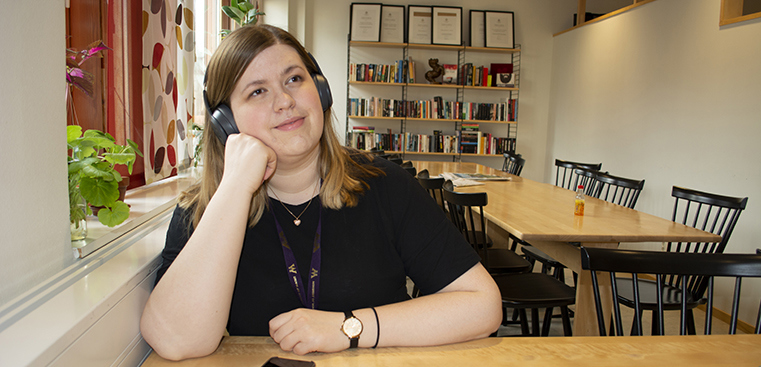Research deflates the myth that boys read less than girls
2020-03-16

According to previous studies, boys read to a lesser extent than girls and people generally read when they have free time. But is this really true? Elisa Tattersall Wallin, doctoral student at the Swedish School of Library and Information Science at the University of Borås, Sweden, is interested in people's reading practices and has investigated a very large amount of data from the Swedish subscription service for audiobooks, BookBeat. In her study, she has focused on when readers spend time listening, how much time they spend on reading, and whether there is a difference between young and adult readers and between women's and men's reading. In the study, she refers to the listening to audiobooks as reading and believes that it is a way to absorb literature just as when reading physical books.
"Previous research shows that reading digital audiobooks is increasing. Between 2017 and 2018, the number of Swedes who subscribed to an audiobook service increased from six to eleven percent. The growing popularity of audiobooks is due to new streaming technologies and new business models such as subscription services,” explains Elisa Tattersall Wallin.
Boys read more than you might think
Elisa Tattersall Wallin's study shows an astonishing result, namely that boys consume books to a greater extent than previous studies on traditional reading have shown.
"When it comes to digital audiobooks, young men aged 18-20 actually stand out. They read audiobooks the most, 100 minutes per day on average. They actually overtake women of a similar age, who spend about 90 minutes a day reading via audiobooks. The average adult reader is somewhere in between on this time span. Usually, women are more frequent readers than men, but this study shows that it is fairly even between men and women when it comes to the reading of digital books. It actually looks like the gender gap is shrinking," she says.
Traditional reading studies show that the average Swedish reader spends 22 minutes per day reading. This is according to the Nordicom Media Barometer (Nordic Information Centre for Media and Communication Research, an independent knowledge centre at the University of Gothenburg). However, Elisa Tattersall Wallin points out that the statistical data now available differ greatly from this.
"The selection in this type of study is based on some 1,000 individuals who are meant to represent the Swedish population, readers as well as non-readers. But the material I have at my disposal is much larger. It is estimated at upwards of 80,000 individuals, and also is of actual readers who use an audiobook subscription service. This makes the different studies difficult to compare.”
Can be combined with other activities
When do the people in the study enjoy audiobooks?
"You would think that it is at the times when they are free, such as in the evenings and weekends, but the study shows that they actually read a lot on weekdays and in the daytime, when you imagine that people are busy with work or school. Young men, it turns out, read mostly in the morning. Reading decreases between 17:00 and 20:00, to reach a peak again at 22:00.”
New questions waiting for answers
According to Elisa Tattersall Wallin, the phenomenon raises even more questions. What do they do when they read or listen? How is it that they have time to read so much on weekdays and during the day?
"It seems that something is changing in reading practice, in how and when we read and listen to audiobooks. Something's happening with the new medium. We read at more times, read for longer, and in places other than traditional. We can listen when we do the dishes, jog, or commute. The medium can be combined with other chores when it is mobile, unlike printed books where you have to use hands and eyes and thus become more bound to a specific place when you read. There are such exciting questions emerging.”
What does your own reading look like?
"I myself have become more and more interested in listening to audiobooks and do it often when I go for walks. One interesting thing that I've noticed is that I can return to a place I was on a walk and remember exactly where in the story I was. It's exciting, isn't it? Right now, I'm listening to the fourth Harry Potter book with Stephen Fry as the reader.”
What is the next step in your research?
"The plan is to interview audiobook readers to investigate what is actually happening, such as how students in secondary schools use audiobooks.”
Read more
Elisa Tattersall Wallin is a doctoral student in Library and Information Science with a focus on reading practices and audiobooks at the Swedish School of Library and Information Science, University of Borås, Sweden.
Read more about Elisa Tattersall Wallin's research.
The article "Time to read: Exploring the timespaces of subscription-based audiobooks" by Elisa Tattersall Wallin and Professor Jan Nolin has been published in the highly rated journal New Media & Society.
Read Time to read: Exploring the timespaces of subscription-based audiobooks.
Text and photo: Solveig Klug
Translator: Eva Medin

